Print is Dead. Long Live Print.

“Print is Dead. Long Live Print. The World’s Best Independent Magazines” by Ruth Jamieson is a dynamic and generously illustrated survey of independent publications shaping the future of print journalism. It showcases over 50 examples of innovative magazines from around the globe, most of which launched in the aughts and early teens. Interviews with editors, art directors, and founders offer insight into why they decided to start their publications and the challenges they have faced. A directory at the back lists dozens more magazines worth investigating. This paean to the printed word is filled with creative inspiration and hope for the future of print media. $49.95 in hardcover. tinyurl.com/LongLivePrint
Why Do People Like Print on Paper?
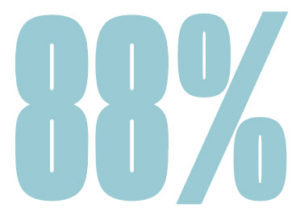
Between 2015 and 2018, Two Sides North America (a non-profit initiative by companies from the graphic communications industry) partnered with polling firm Toluna to conduct consumer surveys on how Americans feel about print and paper. Here are just a few of their findings. Find more facts and myth-busters at twosidesna.org/two-sides-infographics.
88% believe they understand, retain, or use information better when they read print.
80% have a clear preference for reading complicated materials in print, in contrast to 12% for computer screens, 5% for e-readers, and 3% for smartphones.
67% think it’s important to “switch off” and enjoy printed books and magazines, including 69% of 18-24 year olds.
Protect Your Video Equipment
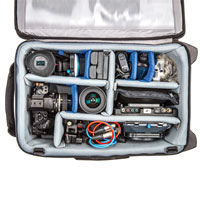
If you start investing in video-making equipment (see related article on page 6), you’ll want to protect that investment with bomber transport cases. Think Tank is a top-tier maker to consider. Think Tank’s video transport cases are designed specifically for this equipment — and for reduced weight, optimum capacity, and ease-of-use. Built with striated aluminum and arched twinwall reinforced struts, they are tough and highly protective, yet lightweight and easy to transport. tinyurl.com/ThinkTankCases
… And Your Photography Equipment
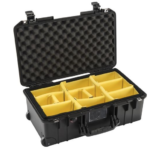 For your photography gear, Pelican makes a variety of specialized cases. Originally designed by an avid scuba diver, Pelican’s full line of ultra rugged cases are a staple in demanding industries like fire safety, military, aerospace, and entertainment. Among their camera cases, the Pelican Air series keeps water and dust out while balancing air pressure — and is 40 percent lighter than other polymer cases, including Pelican’s legendary Protector series. tinyurl.com/PelicanCamera
For your photography gear, Pelican makes a variety of specialized cases. Originally designed by an avid scuba diver, Pelican’s full line of ultra rugged cases are a staple in demanding industries like fire safety, military, aerospace, and entertainment. Among their camera cases, the Pelican Air series keeps water and dust out while balancing air pressure — and is 40 percent lighter than other polymer cases, including Pelican’s legendary Protector series. tinyurl.com/PelicanCamera
A New Kind of Presentation Format
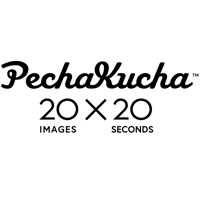 For a spirit-lifting timeout, head to pechakucha.org. PechaKucha is a presentation format in which creative individuals show 20 images for 20 seconds each, live at community events. The original idea, conceived by Astrid Klein and Mark Dytham of Klein Dytham architecture in Tokyo, was to give people a way to share their art-filled passions without having them talk on for too long! Since 2003, “PechaKucha nights” have gone viral — and global. They’re now happening in over 1,000 cities around the world. Interested in an architect’s journey, how every picture tells a story, or the power of an idea? How about “Sublime and Ridiculous Record Breakers?” You can watch presentations like these archived at pechakucha.org.
For a spirit-lifting timeout, head to pechakucha.org. PechaKucha is a presentation format in which creative individuals show 20 images for 20 seconds each, live at community events. The original idea, conceived by Astrid Klein and Mark Dytham of Klein Dytham architecture in Tokyo, was to give people a way to share their art-filled passions without having them talk on for too long! Since 2003, “PechaKucha nights” have gone viral — and global. They’re now happening in over 1,000 cities around the world. Interested in an architect’s journey, how every picture tells a story, or the power of an idea? How about “Sublime and Ridiculous Record Breakers?” You can watch presentations like these archived at pechakucha.org.
How’s Your Pen Game?
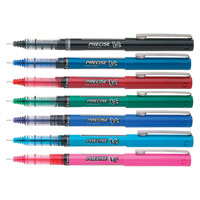
One of the key tools-of-the-trade for any editor is an effective editing pen. Not too thick, not too thin, no skipping, and definitely no bleed-through. Extra points for coming in a variety of colors. Enter Pilot Precise V5 rolling ball pens. With patented needle point technology, each pen has a ringed ink feeder for a smooth and even ink flow. No skips, no blobs. A visible ink supply shows how much ink is left. Try the 0.5mm extra fine point with tungsten carbide tip for added precision. And yes, they come in all your favorite editing colors. $9 for 7-pack, assorted colors. tinyurl.com/V5pens
A Fount of Facts for Journalists
 Could you use a resource for credible research on current news topics? Try Journalist’s Resource, a project of the Harvard Kennedy School’s Shorenstein Center and the Carnegie-Knight Initiative. Given the deluge of research output every day, this initiative aims to be a useful curator. Kennedy School faculty, staff, and graduate students selectively gather and post scholarship relevant to media practitioners, bloggers, educators, and general readers. The philosophy is that peer-reviewed research studies can, at the very least, help anchor journalists as they navigate difficult terrain and competing claims. In addition to providing access to top academic and governmental research on a wide range of topics, the site offers syllabi for educators (e.g., a semester-long course on Journalism Ethics in the Digital Age) and skills-based reference material or “Tip sheets” (e.g., First-time international reporting: Tips from a former foreign correspondent). All content is free and open to the public for republishing under a Creative Commons license. journalistsresource.org
Could you use a resource for credible research on current news topics? Try Journalist’s Resource, a project of the Harvard Kennedy School’s Shorenstein Center and the Carnegie-Knight Initiative. Given the deluge of research output every day, this initiative aims to be a useful curator. Kennedy School faculty, staff, and graduate students selectively gather and post scholarship relevant to media practitioners, bloggers, educators, and general readers. The philosophy is that peer-reviewed research studies can, at the very least, help anchor journalists as they navigate difficult terrain and competing claims. In addition to providing access to top academic and governmental research on a wide range of topics, the site offers syllabi for educators (e.g., a semester-long course on Journalism Ethics in the Digital Age) and skills-based reference material or “Tip sheets” (e.g., First-time international reporting: Tips from a former foreign correspondent). All content is free and open to the public for republishing under a Creative Commons license. journalistsresource.org

